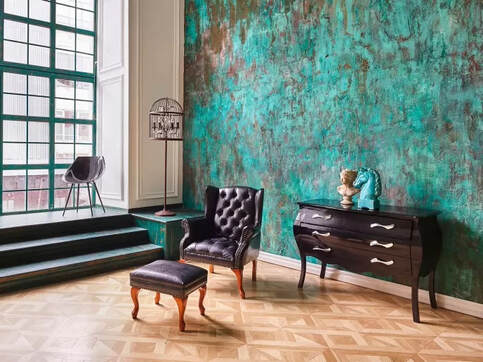 Antique & Vintage Sales "Tops" In Decorative Arts Markets Antique & Vintage Sales "Tops" In Decorative Arts Markets New York - Oh, what a difference a few years can make, especially when it comes to the world of the decorative arts. From proclamations of "It's over," to "people just don't want that old stuff anymore," the claims relating to the demise of the antique and vintage industry over the last twenty years have been about as plentiful and exaggerated as those levelled against the famed American satirist, Mark Twain. In fact, not only has the antique and vintage industry been thriving recently, but since the onset of the pandemic, the public's demand for decorative arts items from the past has literally exploded across every major sales platform to be had - from bricks and mortar shops, to pop-ups, and every conceivable type of online concern in between - the antique and vintage industry is now experiencing a wave of popularity and profitability that up until now, has never been seen before. Bolstering this claim, the most recent Global Home Furnishings report, produced by ResearchandMarkets.com, which tallies worldwide sales for this sector, indicated that while everyone had clearly spent more time at home during the last few years due to the pandemic, they also spent more money to furnish their homes, with worldwide decorative arts spending growing over twenty-eight billion dollars year-over-year. While e-commerce sites specifically related to decorative furnishings saw growth across the board, one market category from the report in particular stood out for the massive increase in sales volumes above all others; the antique, vintage, and consignment industry. As would be expected with reports of this ilk, theories abound as to why this particular area of the decorative arts segment is seeing such a strong resurgence in popular interest lately. However, for many industry insiders, the answer to that question may be more about a convergence of multiple market conditions and coincidental timing, rather than a single determining factor or theory. For Janet Cain, who runs three separate Instagram stores, it's all about the pandemic. "It really started there," she says, "from the moment Covid hit, sales literally blew-up and haven't stopped since." Cain believes that people got used to seeing and tracking items online from the comfort of their home, which made purchasing super easy, and by extension, created more opportunities for buying. "I have more repeat customers than ever," says Cain, "and their buying a lot more than before." Cain thinks that in some ways the pandemic created a new world-order when it came to making purchases online. "Before it was a choice, but during Covid it often became your only option," she says. "Now I think people have just gotten used to it and enjoy the convenience of not having to trek across the countryside in search of that perfect find." Others in the industry see a larger overall picture when it comes to understanding the recent surge in popularity for everything antique and vintage. Anna Brockway, the co-founder and president of Chairish, an international online antique and vintage furniture site, whose revenue has more than doubled in the past year, thinks that there is no question that vintage is hot right now. Brockway says, "Not only is vintage furniture beloved for its chic, one-of-a-kind style, it’s also increasingly appreciated for its immediate availability and sustainability. Right now, due to serious supply chain snarls, contemporary furniture manufacturing and delivery is moving at a glacial pace, while shoppers' expectations around speed and instant availability have never been higher." Posters who've listed items for sale on Chairish, say it's a clear example of buyers (especially younger ones), increasingly wanting sustainable and unique items with a little history to them instead of the sameness that often comes from big-box stores. Another piece of the puzzle, at least according to Christina Williams, who runs a number of high-end consignment shops in and around Atlanta and Savannah, thinks the explosive growth of interest in antique and vintage furnishings is also likely a direct result of price. Why? Because, for the most part, consignment pricing for quality items is almost always going to be cheaper than purchasing comparably newer items, which makes the consignment option an attractive proposition for savvy buyers, especially during uncertain economic times. Williams says her numbers over the last twelve months have been so strong that she now has a 'buy team' that scours high-end Atlanta neighborhoods with homes for sale in an attempt to beat out Estate Sale companies for the rights to sell the clients goods and chattels. "Demand is so strong," says Williams, "that if I didn't get to some of these houses first, and come out with a signed contract, I probably wouldn't have enough inventory at months end to stock my stores." Statista, an international company that specializes in market and consumer data for businesses, says that conservatively they expect the antique, vintage, and consignment furniture resale market to increase by over seventy-percent in the next few years. So what's fueling this current market growth? Well, for starters, many analysts point to the changing buying tastes of young Millennials and Gen Z consumers who started the "used" trend with vintage clothing, while seamlessly transitioning that into used furniture. Originally part of the Ikea mindset, many began to finally balk at the uniformity of design, and instead sought out uniqueness in not only their clothes but home furnishings as well. Now, with some discretionary income finally arriving, Millennials and Gen Z'ers are pursuing even more one-of-a-kind purchases that are in keeping with their collecting preferences, and which often come with a more expensive price tag. In fact, in a recent survey conducted by Chairish, over thirty-one percent of Millennial and Gen Z respondents said that they had become much more interested in buying used, vintage, and antique furniture online over the last two years, than in the two years prior. Jason Stavros, a young engineer from San Diego, perhaps embodies this new generation of decorative arts enthusiasts best, as he seemingly identifies with many of the factors that appear to be connected to the popular themes currently attributed to the rise of interest in the antique and vintage marketplace. "I'm an engineer by trade," says Stavros, "but I started buying and selling second-hand stuff just before the pandemic struck as way to save after I graduated university." Today, Stavros says that his interest in the decorative arts is more about being unique, buying something with a sense of history, helping the environment by upcycling, and avoiding supply-chain issues where possible. "I list on Chairish and quite a few other sites in my spare time," says Stavros, "but business has been so good recently that I'm giving serious consideration to hanging my own shingle and hitting it full-time... Or, as I like to call it, time to bring in the old!" - A.I.A. Staff Writers  NOTE: For readers seeking more information about the Asheford Institute Of Antiques distance-learning program on professional-level appraising, the study of antiques, collectibles, vintage and mid-century modern items, please click here to visit the school's Home Page. Should you have additional questions about the Asheford program, you can also write to the school at: info@asheford.com or call the Registrar's Office toll-free at: 1-877-444-4508. Comments are closed.
|
AIA StaffWe're providing our students and reader's with the latest breaking news on events and happenings that we think might be of interest to both collectors and dealers alike. Including changes within the world of antiques, vintage, collectibles and appraising that might just have an effect on your bottom line. We're also interested in hearing from you - so if you've got a great newsworthy story, let us know, and you just might find it here! Archives
July 2024
CategoriesLegal Disclaimer: Extraneous opinions, statements and comments made by individuals represented within these posts do not necessarily reflect those of the Institute. The publication naming of specific business entities, organizations, and concerns, contained herein, in no way represents an endorsement or recommendation of services or products by the Institute. Publicly identifiable information contained herein (including, but not limited to contact information), has been intentionally limited where possible, due to privacy and legal concerns related to the digital dissemination of information through online means. All views expressed herein are those of their respective owners. The Institute is in no way responsible, financially or otherwise, for the accuracy or validity of statements contained within published posts from sources that originate and appear outside of the written and expressed views of those submitted by the Institute.
|




 RSS Feed
RSS Feed




